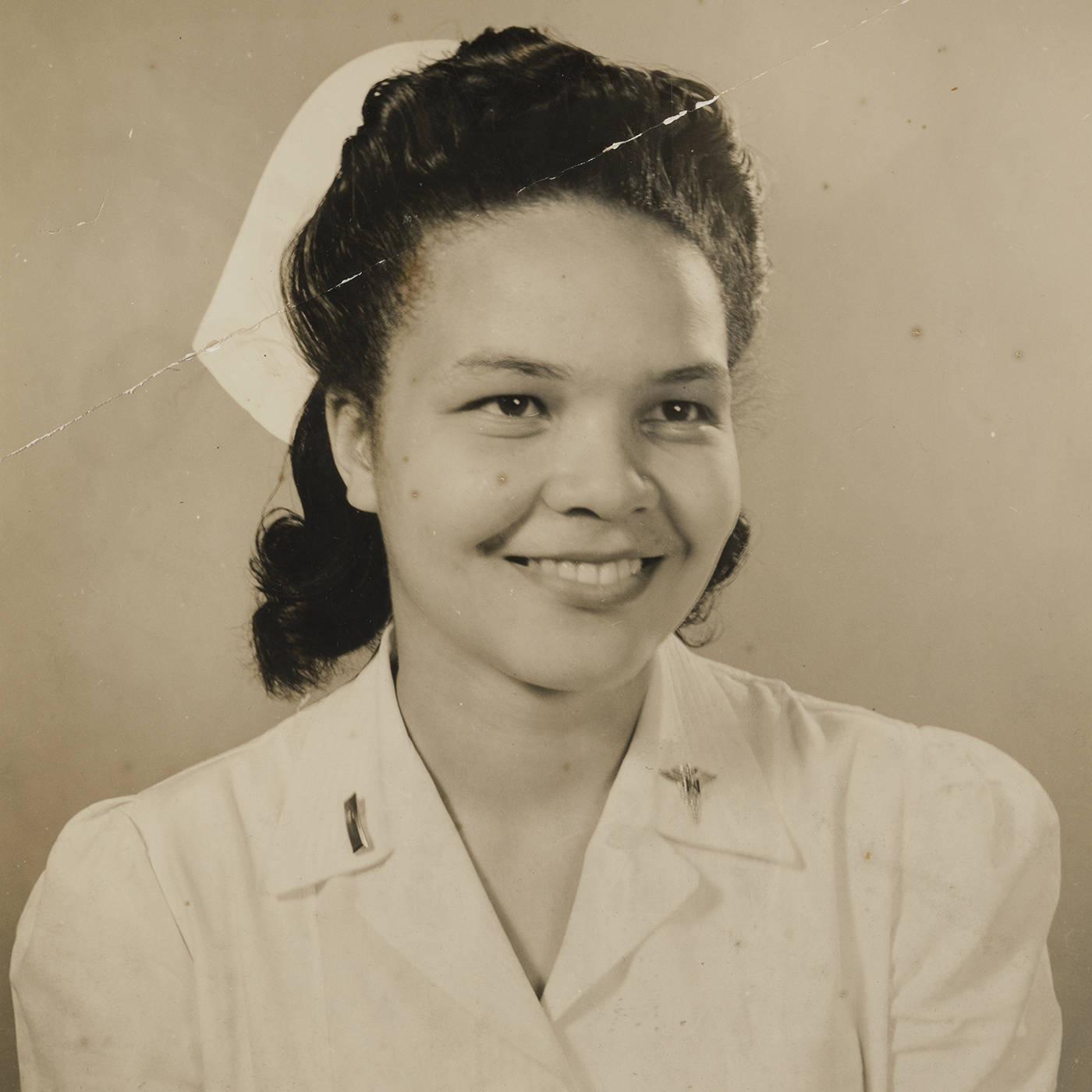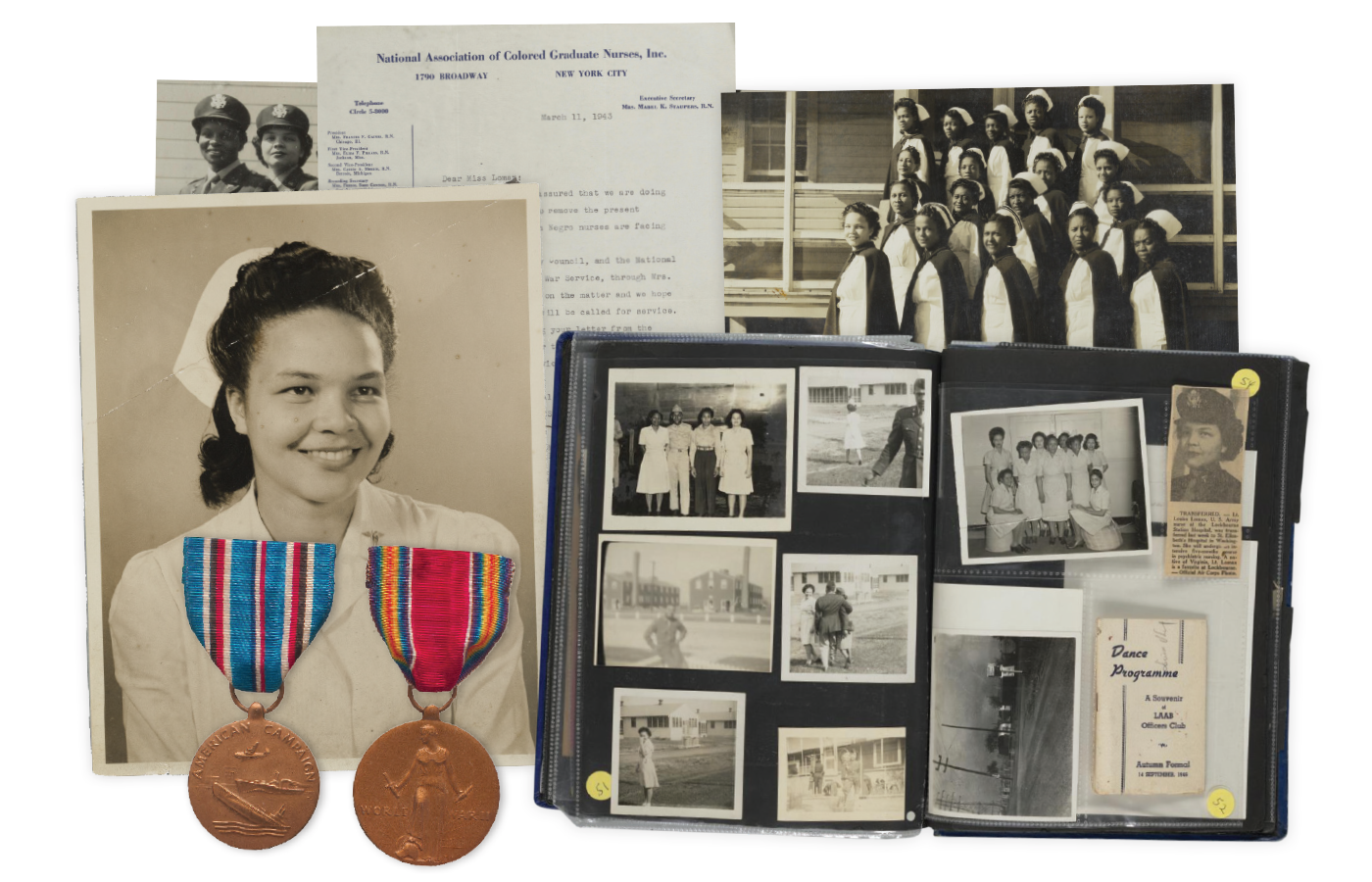
Books
It’s past time
Pia Winters Jordan explores the legacy of her mother, Louise (Dipl.’42), a Tuskegee Army nurse during World War II
What began as a daughter’s regret has become a life mission for Pia Winters Jordan.
The regret: not learning more about her mother, Louise Lomax Winters (Dipl.’42), while her mother could still tell her. The mission: chronicling her mother’s history and that of the 28 other Black nurses who during World War II staffed the Tuskegee military base in Alabama, home to the (now-celebrated) airmen. Jordan hopes with “Memories of a Tuskegee Airmen Nurse and Her Military Sisters” (University of Georgia Press, 2023), the nurses will become as recognized as their aviator counterparts.
Jordan got the idea after her mother, who died in 2011 at age 91, suffered several ministrokes and moved to a care facility. While packing, Jordan came across an old scrapbook of her mother’s years as one of the first African Americans to serve in the Army Nurse Corps. Jordan knew her mother was a formidable figure. A graduate of the St. Philip School of Nursing (1920-62), the segregated school the Medical College of Virginia established to serve Richmond’s Black citizens, she later became head nurse at Saint Elizabeths psychiatric hospital in Washington, D.C. Jordan even vaguely remembered the scrapbook. Now, however, “I was seeing the book with more mature eyes and a greater understanding of where my mother stood in history,” she writes.
Jordan, the director of the Tuskegee Army Nurses Project and a former journalism professor at Morgan State University, places her historical detective work in the larger context of the civil rights movement. Nonetheless, she devotes the first chapter to her mother’s childhood in Jim Crow Virginia, including its everyday humiliations. “I wanted to lay the foundation of my mother growing up in the South and give some insight into her personality,” she says. “All her experiences in the South, with segregation, that all helped her be the type of nurse she wanted to be.”
The prologue also includes a moving description of the book’s origin story and how, in the course of her research, Jordan discovered that other children of the nurses or airmen only learned about this chapter in their parents’ lives late in the day. Like her mom, those parents didn’t talk about it. Why not? As Jordan concludes poignantly, “I never asked, so I will never know.”

Clockwise from left: 1st Lt. Louise Lomax Winters (ca. 1943); a fellow nurse (Frances McCloud) and Winters (ca. 1943); a 1943 letter to Winters addressing racial discrimination in the Army Nurse Corps; Army nurses at Tuskegee Army Air Field in 1943; a spread from Winters’ scrapbook; an American Campaign Medal and a World War II Victory Medal awarded to Winters. (Courtesy of Pia Winters Jordan and the National Museum of African American History and Culture)
More books
Here’s a glance at a few other books VCU faculty and graduates are writing these days …
Shakti (HarperAlley, 2023)
SJ Sindu, Ph.D.; illustrations by Nabi H. Ali
In this YA graphic novel, Sindu, a VCU English associate professor, explores standard challenges of seventh grade, as the 12-year-old namesake protagonist learns to make new friends, deal with clueless adults and discover her own strength. But in a “Sorcerer’s Apprentice” twist, Shakti, seeking to expose the machinations of a mean girl trio, mistakenly calls up a fearsome deity alongside a benevolent one. Though the author draws on Tamil lore, the ultimate message is a universally hopeful one: Magic is no alien resource, but “woven into the universe itself,” a ready tool if you can tap into its power.
The Makings and Unmakings of Americans: Indians and Immigrants in American Literature and Culture, 1879-1924 (Yale University Press, 2023)
Cristina Stanciu, Ph.D.
In this cultural history, VCU English assistant professor Stanciu, herself an immigrant, draws parallels between the Americanization experiences of Native Americans and the wave of Eastern/Southern European immigrants a century ago — both problems, according to the ruling class — and explains how these peoples shaped our ideas of inclusion, exclusion and national identity. The overarching question, which remains all too pertinent: Who belongs and who doesn’t?
SilverComm: Marketing Practices and Messages for the Age of Aging (Rowman & Littlefield, 2023)
Anne M. Cooper, Ph.D. (M.S.’79) and Young Joon Lim, Ph.D.
Marketer beware, says Cooper, a mass communications grad, veteran journalist, PR person and academic. Senior citizens command the lion’s share of disposable income in the U.S., and the strategic comms community ignores them at their peril. In this supplementary textbook, the authors cover past marketing efforts, examine pitfalls to avoid and discuss future opportunities; with projects and exercises to put theory into practice.
